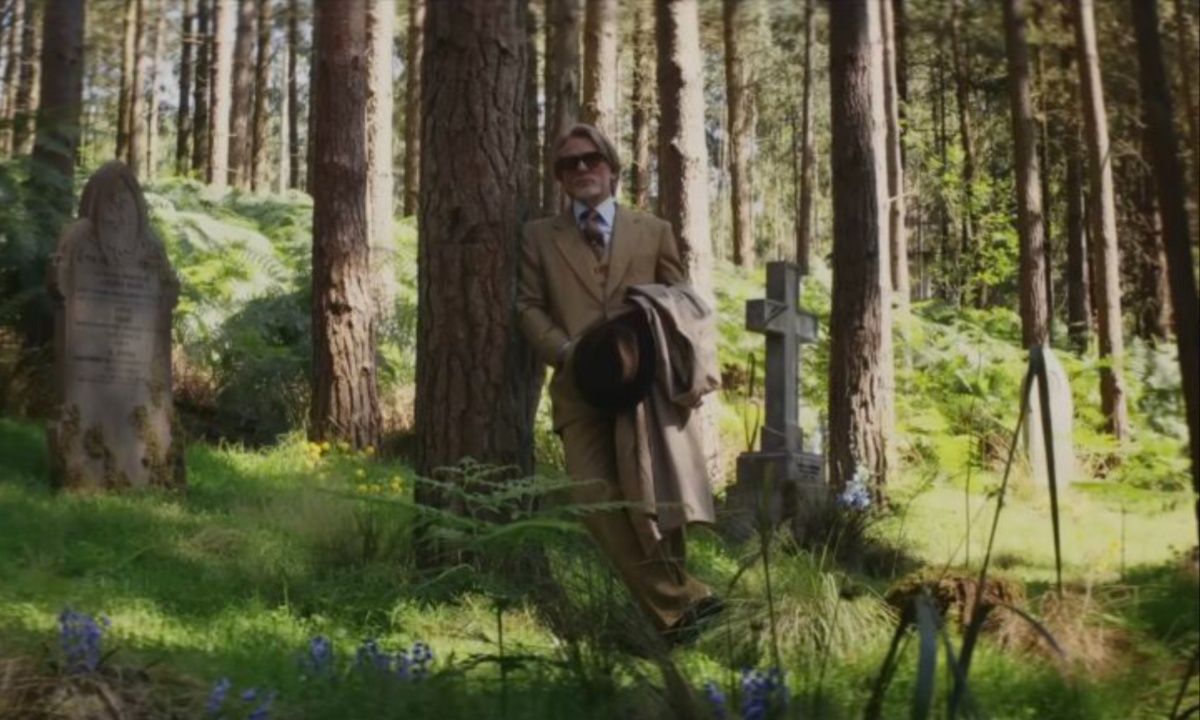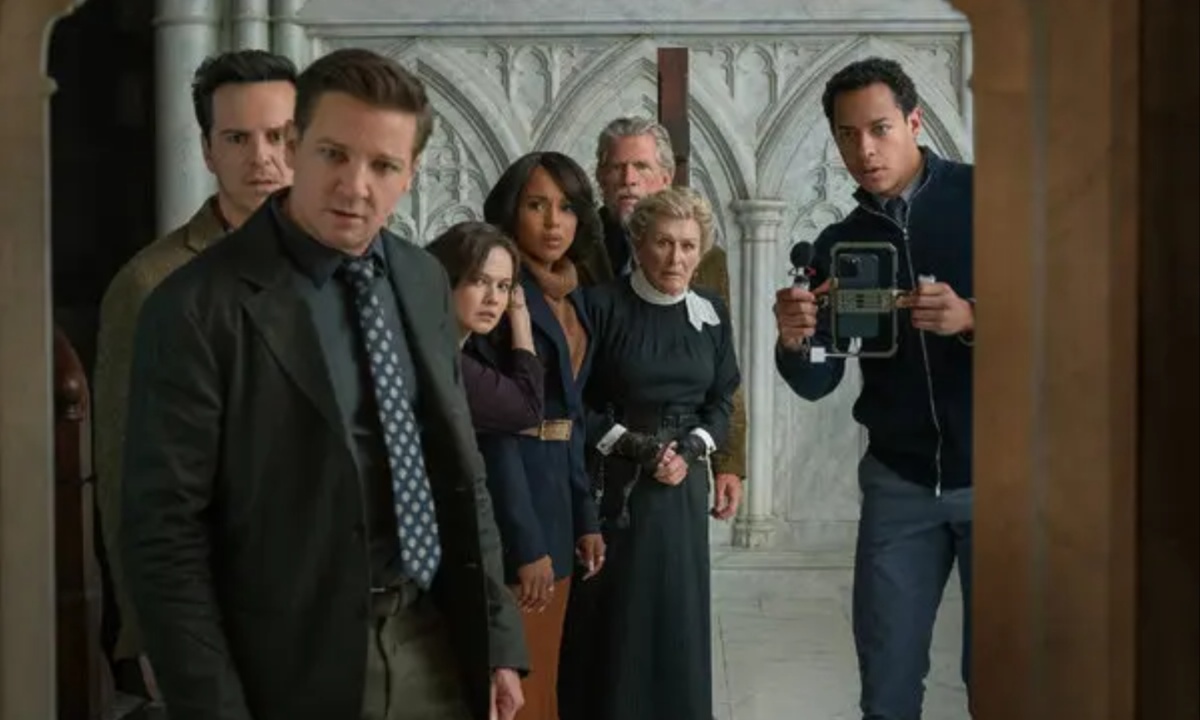Wake Up Dead Man: A Knives Out Mystery is the third installment in Rian Johnson’s acclaimed series, following detective Benoit Blanc as he unravels complex puzzles. Unlike the prior films, this story is set in a quiet, deeply religious town, creating a unique backdrop for the murder mystery.
The film delves not only into whodunit mechanics but also into broader themes of faith, morality, and human empathy. While the twists are best experienced blind, the narrative intricately ties together the plot, characters, and thematic motifs, making it one of the most thought-provoking Knives Out films to date.
At the heart of the story is the murder of Monsignor Jefferson Wicks, whose death initially seems motivated by anger from a congregant. Suspicion falls on Jud Duplenticy due to his public conflicts with Wicks and frustration over the priest’s fiery sermons.
The congregation, confronted with Wicks’ revelation as the secret father of Cy Draven, had multiple reasons to protect themselves. As the story unfolds, the audience is misled into believing in miraculous events, only to discover that Wicks’ death was orchestrated by Nat Sharp, parishioner Martha Delacroix, and her partner Samson to prevent the misuse of a powerful family diamond.
The diamond at the center of the narrative drives both the plot and the characters’ moral decisions. Martha had been entrusted years earlier to safeguard the diamond from those who might exploit it, which shaped her devotion to the church and justified extreme measures.
When Wilcox plotted to steal it from his father’s tomb, Martha recruited others to ensure the diamond remained hidden. Her actions, though criminal, are rooted in a deeply personal sense of duty, blending religious faith with moral responsibility and creating a layered motivation that transcends simple villainy.

Deaths, Backstory, and Villainization Reveal Consequences, Empathy, and Moral Complexity in Film
Wake Up Dead Man features more deaths than any previous Knives Out installment. It blends premeditated murder, impulsive killing, and suicide. Monsignor Wicks is killed by Nicks under Martha’s orchestration, while Samson dies during the tomb deception.
Martha herself ultimately succumbs to guilt and a lethal dose of medicine she had once intended for another. Beyond the present timeline, the film’s backstory also includes the deaths of Wicks’ grandfather and mother. These tragedies highlight mortality and human fallibility, treating even criminal actions as deeply consequential rather than purely sensational.
This installment provides rare glimpses into Benoit Blanc’s past, revealing why he is skeptical of religion. Blanc identifies as an atheist, shaped by his upbringing with a devoutly religious mother with whom he had a falling out. While he respects the moral contributions of genuinely good individuals like Jud, he is acutely aware of how faith can be manipulated for power or profit. These insights illuminate Blanc’s analytical approach and reveal a personal motivation for pursuing truth with empathy, not only logic, adding emotional depth to his character.
A key theme revolves around Grace Wicks, dubbed the “Scarlet Woman,” who is demonized posthumously for her greed and rebellion. Her actions, including damaging the church while searching for her father’s wealth, serve as a cautionary tale for Wicks’ congregation and fuel Martha’s lifelong obsession with morality and control.
Yet the narrative gradually recontextualizes Grace’s story, showing that societal judgment and lack of familial empathy contributed to her vilification. By understanding Grace, characters like Martha achieve emotional closure, reinforcing the film’s emphasis on forgiveness over condemnation.

Climactic Deceptions Reveal Moral Conflicts, Faith, Redemption, and Consequences of Human Choices
The climax layers tension and ethical ambiguity. Wicks’ staged resurrection, meant to inspire religious fervor, intersects with a web of personal motives and fatal consequences. Nicks’ attempt to seize the diamond results in Samson’s death, while Martha’s poisoning of Nicks illustrates the blurred line between justice and revenge.
Blanc’s choice to withhold the full truth, allowing Martha to confess quietly, demonstrates his ethical prioritization of human dignity over public spectacle. These intricate deceptions heighten suspense while raising questions about secrecy, loyalty, and mercy.
Faith is a central theme, seen through the actions of diverse characters. While Wicks exploits it to control others, and some pursue profit or personal gain, Jud and Samson represent genuine belief and moral integrity. Jud’s empathetic approach contrasts with the punitive religious zeal of Wicks, emphasizing forgiveness and compassion. Martha’s journey, culminating in her final rites and spiritual reconciliation, underscores redemption as a core motif. The narrative shows the consequences of manipulative faith and the value of sincere moral conviction.
Though each Knives Out film functions as a standalone mystery, this installment hints at future narrative possibilities. Blanc’s decision to protect Martha’s dignity while allowing the case to appear unresolved publicly may influence his reputation and credibility in subsequent investigations.
The persistence of Wicks’ believers and public misconceptions presents potential complications for future plots. By balancing public perception with private truth, the film strengthens Blanc’s character arc and sets the stage for challenges involving morality, justice, and human judgment in later stories.
Wake Up Dead Man is a story about faith, empathy, and human frailty. Beyond the intricate murder plot, it examines how personal beliefs shape actions, how forgiveness and understanding counter judgment, and how moral choices affect an entire community.
Blanc’s faith in humanity, Jud’s ethical conviction, and Martha’s eventual redemption form the emotional and moral core of the narrative. These intertwined themes give the film a strong emotional impact and reinforce its status as a gripping mystery with profound moral and humanistic lessons.



